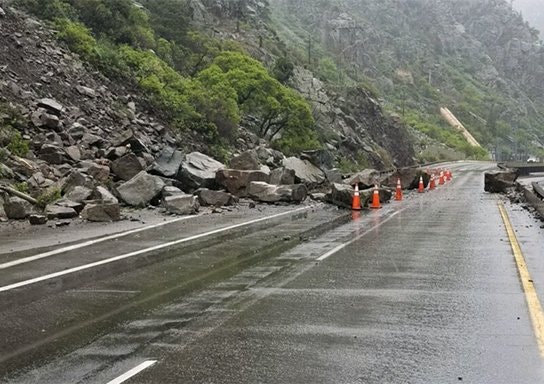Mudslides, Debris Flows, and Flash Floods, Oh My!
By admin Published May 24, 2019

It’s not surprising that with a wet, snow packed winter, come the threats of mudslides and flash floods in the spring. In our case this year, with a historical high for snow pack, mixed with the burn scar from last summer’s Lake Christine Fire, we need to be on high alert for what is to come during run off season.
During this runoff season there is also concern in the Crystal River Valley of localized flooding due to the heavy snowfall and delayed runoff that is expected this year. This year, the high water season is expected to occur several weeks later than usual and last much longer.
We are planning a public meeting for June 5, 2019 from 6-7 pm at the Redstone Fire Station to discuss the possibility of flooding in the Redstone area. There will also be a community meeting at the Eagle County Annex (El Jebel) to talk about the threat of mudslides and debris flows from the Lake Christine burn scar on June 10, 2019 at 6 pm.
Causes of Mudslides, Debris Flow, and Landslides
Debris and mudflows are rivers of rock, earth, and other debris saturated with water. They develop when water rapidly accumulates in the ground, during heavy rainfall or rapid snowmelt, changing the earth into a flowing river of mud or “slurry.” They can flow rapidly, striking with little or no warning at avalanche speeds. These slides can also travel several miles from their source, growing in size as they pick up trees, boulders, cars, and other materials.
Flood risk is significantly higher several years after a large-scale wildfire, like the Lake Christine Fire. Land that was recently burned by wildfire is called a “burn scar”, and when rain falls over a burn scar, the ground is unable to absorb much of the water, which can result in flash flooding.
Health Threats and Areas of Risk
In the US, 25 to 50 deaths occur each year due to mudslides and debris flows. However, there are other risks associated with these natural disasters, such as:
• Trauma
• Broken electrical, water, gas, and sewage lines
• Disrupted roadways that can endanger motorists or access to health care
Some areas that are likely to experiences mudslides and debris flow are
• Areas of past wildfire where vegetation has been destroyed.
• Steep slopes and areas at the bottom of slopes or canyons
• Channels along a stream or river
So how do you protect yourself and your home from slides and flash floods?
It is always a great idea to have a go-kit and evacuation plan set into place for any type of natural disaster that may occur in your area. We have lots of resources on our website to help.
Here are some tips on what to do during and after heavy rains and slides:
• Be on alert for warnings about intense rainfall or instructions from local authorities. – Text LCFLOOD to 888777 for information on the Lake Christine burn scar area, or register at pitkinalert.org for more alerts.
• Be aware of a sudden increase in water level (a trickle of flowing mud may precede a larger flow).
• Listen for rumbling sounds or tilted trees, telephone poles, or fences.
• Be alert when driving. If danger is imminent, quickly move away from the path of the slide and move to higher ground away from the path.
• Stay away from the site as additional flooding or slides may still occur.
• Check for injured or trapped people near the affected area.
• Report any broken utility lines.
If you want more information on threats of mudslides, debris flows or flash floods in the Lake Christine burn scar area, Text LCFLOOD to 888777 or register at www.pitkinalert.org, regardless of what county you live in.
If you live in the Redstone area, register at www.pitkinalert.org for flood warnings.
You can follow us for information on mudslide/flooding safety on our website and social media channels. And, as always, if you have any questions, please do not hesitate to reach out to your friends at Carbondale Fire District.

